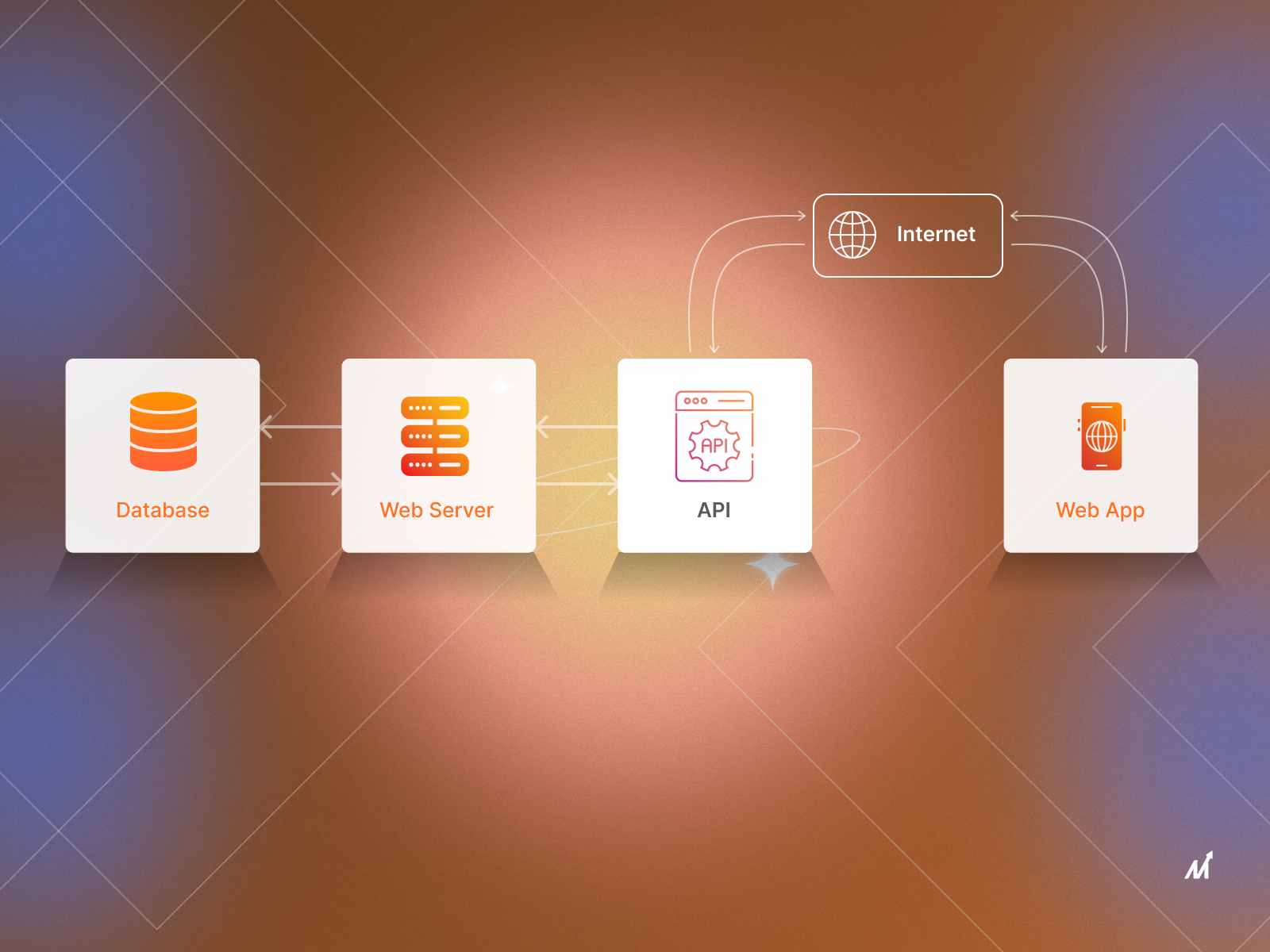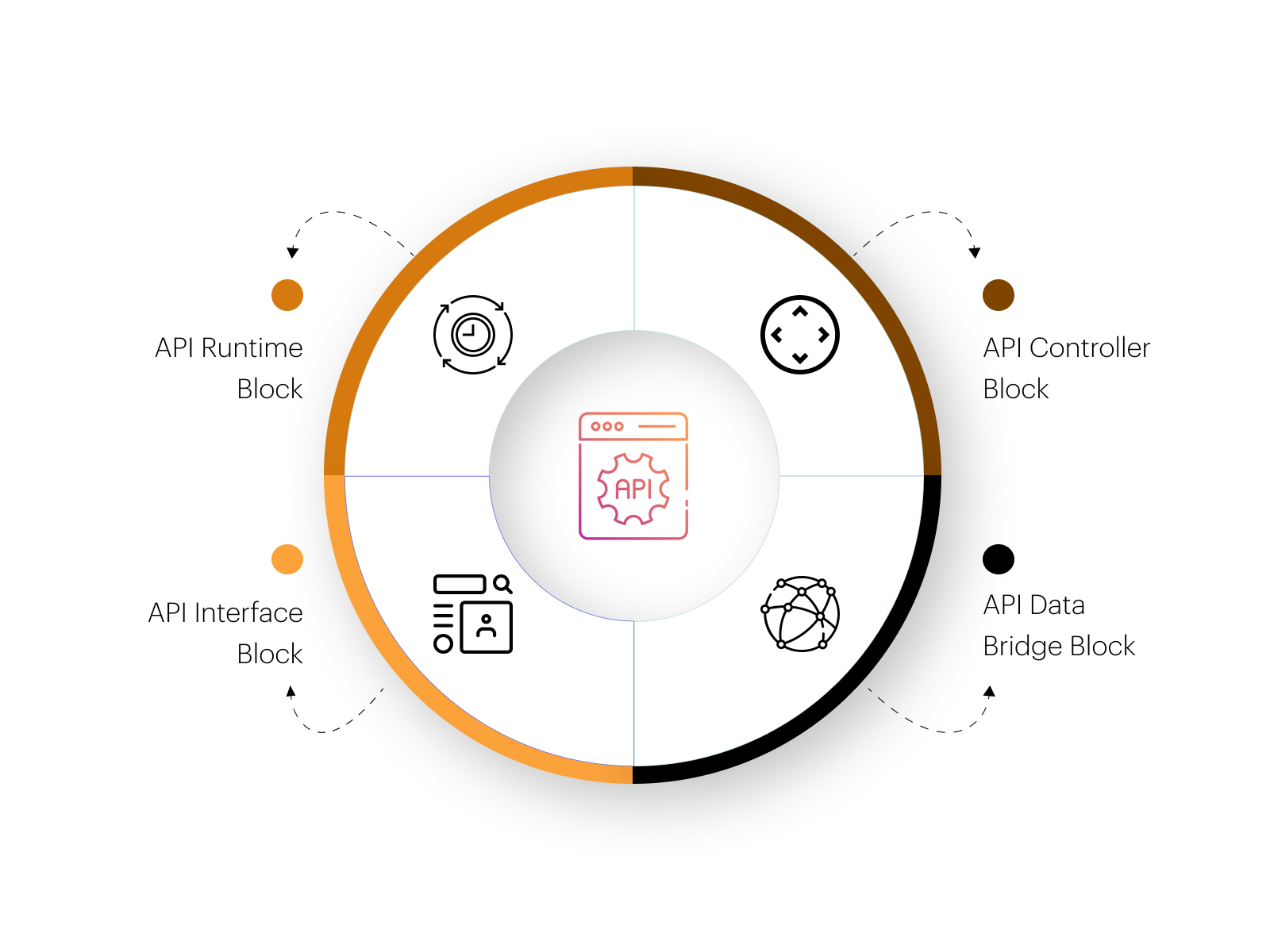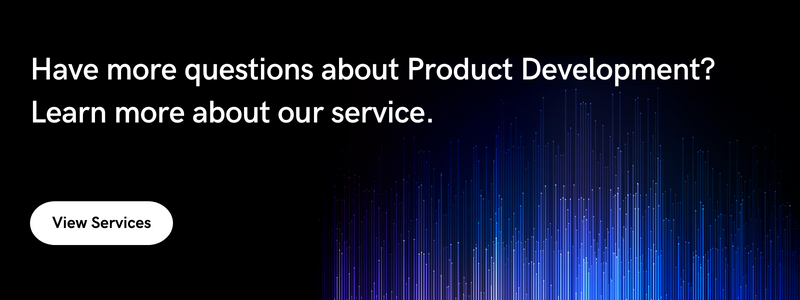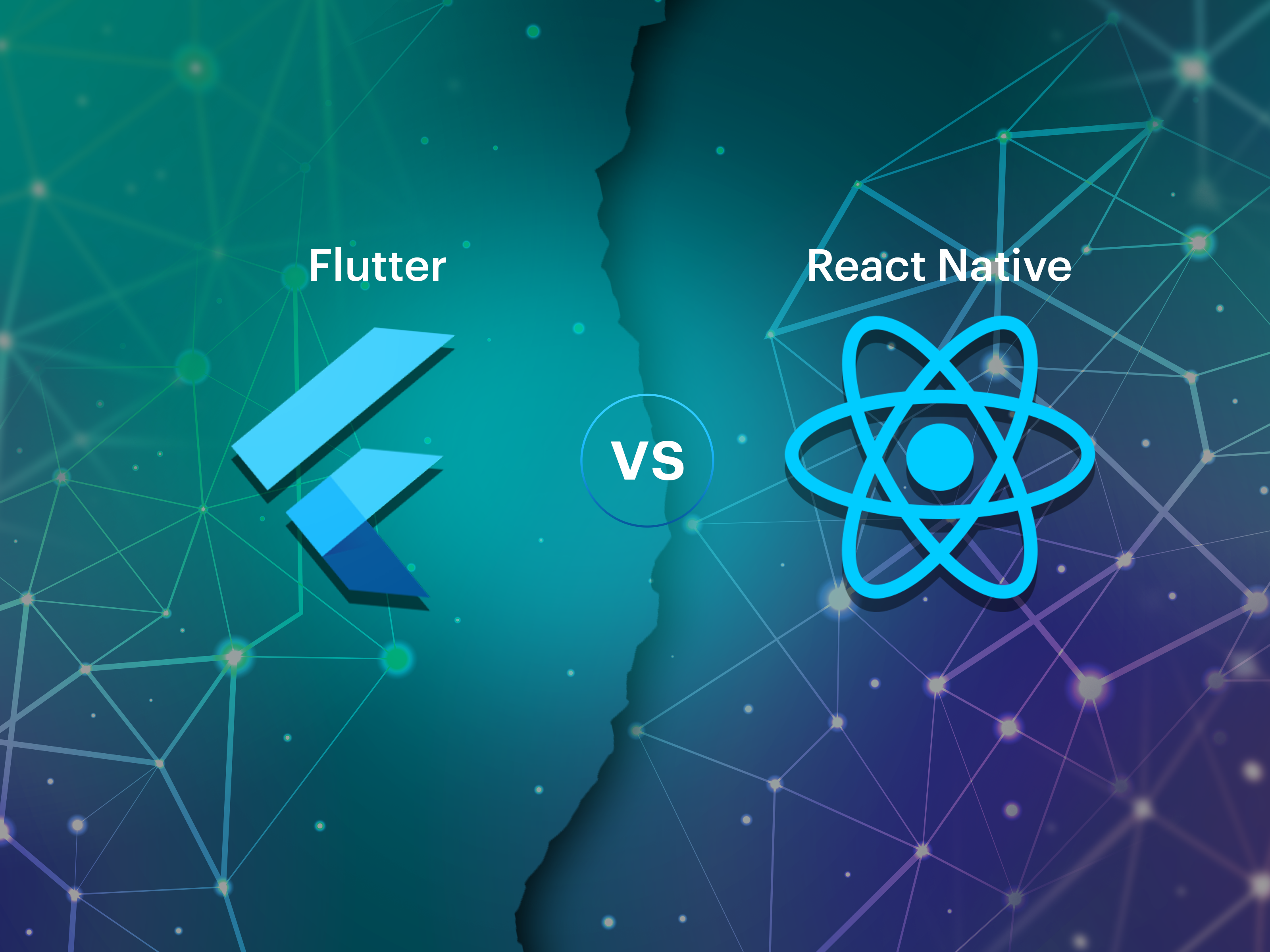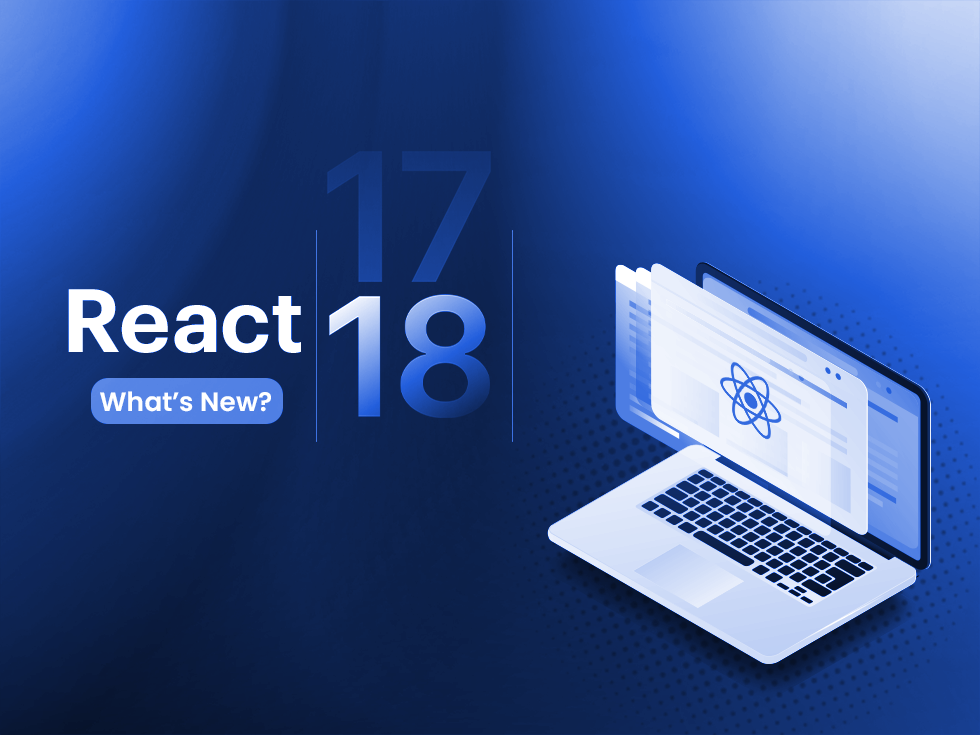API (Application Programming Interface) is a software interface that authorizes two apps to interact with each other without the intervention of any user. API development is the process of the collection of software procedures and functions.
APIs or Application programming interfaces ease software innovation and development by enabling applications to exchange functionality and data safely and efficiently. An API, or application programming interface, aids companies in opening up the performance and data of their applications to business partners, external third-party developers, or departments within their organizations.
APIs permit products and services to interact and leverage each other’s functionality and data via a documented interface. Developers don’t require to know how an API is executed.
In simple terms, API development signifies a software code that can be executed or accessed.
API Development: Architecture For An Ecosystem Of Modular Applications
A technical framework for creating a software user interface that makes use of backend data and application capabilities is known as API architecture. An API architecture comprises elements for data access, runtime execution of business logic, traffic control, and external interfaces.
They are all set up in a particular order. Each of them carries out a specific, specified task individually. However, they manage to transmit data between two devices across the Internet.
API Architecture is the procedure of defining the processes and methodologies for running and developing the API. They consist of components and a description of their logical interaction.
You can create a reusable and modular application ecosystem using API-first architecture.
API-based architecture is building and designing the programming interface and then beginning the software application development based on the workflow model and environment. Thus, this architecture is distinct from traditional strategies of development.
API Development: Building Blocks Of An API Architecture
1. API Interface Block
The standards for the API are outlined in the Interface block. The developers use the API. The application layer protocol that houses the API controls these specifications. The most often used protocol for sending API payloads is HTTP. As a result, the HTTP method, port number, and API endpoint URL are used to define the API interface. Additional HTTP headers are determined by the API development interface as well.
2. API Runtime Block
The Runtime block manages the computing duties of the API. Each API is a piece of software that serves the needs of the API’s client by carrying out a specific piece of business logic.
A runtime environment is created based on the selected programming language and the toolchain. Then, with additional configuration information and environment variables, the business logic execution occurs within this runtime environment.
3. API Controller Block
An API must manage the traffic entering and leaving the system in addition to the interface. New control mechanisms are implemented using the Controller block, and the API request and response are parsed.
The most apparent control strategies include rate limits and throttles. It prevents the client apps from abusing the API. Additionally, it prevents misuse of the API development tools.
The management of illegal access to API is even more crucial. Therefore, authentication and authorization are also the responsibility of this building piece. It can also look through HTTP headers and data payloads to perform further checks and transformations.
4. API Data Bridge Block
The data storage engines are generally shared by all the multiple APIs that make up the API service, just like databases or any other data store. With this strategy, all APIs will have access to a single source of truth. To enable easy access to data, the API developer needs a bridge between their runtime block and the data engine.
The data access orchestrated the Data Bridge block. This block’s implementation depends on programming libraries and database drives and is platform-specific. However, these can be controlled from the Runtime block.
API Development: Architecture Explained
The architecture of a single API is what we have discussed up to this point. APIs do not, however, exist in a vacuum. Instead, each API has its endpoint within the API service, with its path and request and response semantics. Software that is based on APIs may also use numerous such API services.
1. Security
Access security is taken care of by the basic authentication and authorization performed by the API Controller block. However, it is not a defense against some of the most severe online security risks.
DDoS (Distributed Denial of Service), man-in-the-middle, and other organized hacking operations are regularly used by malicious sites to interfere with API services and steal data. Therefore, API architecture must include more security layers to confront macro-level security concerns.
2. API Management
The broad administrative procedures for managing numerous APIs are called API administration. In addition, numerous interventions are necessary to handle the API development lifecycle from start to finish.
Any API-led strategy within an organization must include API management. Therefore, it is made possible by an API management platform, which manages, deploys, and monitors all APIs. Additionally, it coordinates the teams’ efforts in charge of operations, users, and API developers.
3. Service Mesh
A service mesh connects various APIs like a common logic. Consequently, out of the overarching business logic, many commonalities arise in software development. For example, there are a number of standard reusable modules for various components.
This idea also holds for software development driven by developing an API. Due to the dependency on common business logic, an API service suite will contain numerous APIs that conflict with one another. As a result, service mesh functions as an intermediary sub-system that enables coordinated communication between APIs.
API Development: Steps For Building Robust APIs
There are three basic steps for developing an API.
1. Design The Interface Of The API
Designing the API is the first step toward creating it. Identify your design requirements before determining API endpoints and data requirements. You need to have some record of the choices you make during the design phase. For REST APIs, you must produce a document that conforms to the OpenAPI standard.
Before it’s too late to make changes, planning the API development enables you to solicit input and feedback from individuals who will use it. The cornerstone of an API is the set of endpoints (or resources) you select.
Endpoints can apply HTTP methods to any resource. You could use your API to retrieve contacts, for instance. Contact’s endpoint provides a list of people via the GET HTTP method.
Use the POST method and predefined contact fields on the same endpoint to add new contacts.
2. Copy Server API
One of the most crucial steps is incorporating user feedback into an API design and making necessary adjustments. Many developers find that viewing endpoint is insufficient for giving feedback. Therefore, developers examine sample answers and model API deployment.
A fake API server is a representation of your actual API server. In contrast, the server itself is actual, transient, and designed to provide false information as a response. During the design process, it is possible to provide solutions to inquiries.
3. Develop Your Actual API
It’s time to build the actual API after carefully crafting your OpenAPI document with input from the key stakeholders via a mock API server. Many people would start here, but unlike those who write code first, you are far more selective about how you will use the API.
API Development: Bonus Tips
A system’s architecture defines the component-level layout of its underlying subsystem to ensure proper operation. The same is true for APIs. The API service must function properly in a deployment in the real world, despite the best design decisions. Here are some recommendations.
1. Scalability
The anticipated traffic for any API service is never easy to predict. A flexible API service can manage extreme variances in traffic, whether dealing with seasonal fluctuations or growth.
2. API Modelling
API modeling outlines how the APIs copy the services they represent in the real world. The most common method of modeling APIs is REST. Consequently, it is a framework with strict guidelines for creating APIs. It provides rules for balancing API semantics and functionality so that the APIs mimic the functioning of real-world applications.
3. Hosting Scrutiny
There are different server configurations for hosting APIs. Specifically, there are numerous possibilities between the server and serverless arrangement, each with advantages and disadvantages. But it’s crucial to pick a hosting setup that supports the API service’s commercial objectives.
API Development: Conclusion
If the API development delivers the value it promises, users will only start using it. It implies that it is impossible to ignore the design, architectural elements, and techniques discussed in this article. Consequently, after researching, business owners and stakeholders should develop their APIs to meet their needs and create value.
API Development: FAQs
1. What API do apps use?
Apps use various APIs such as Foursquare API, Gmail API, Firebase, Weather App API, Google Analytics, Facebook API, Twitter API, and YouTube Data API.
2. What are the three types of APIs?
An API can come in three different varieties. REST is a set of recommendations for scalable, lightweight web APIs. Meanwhile, a stricter standard for safer APIs is SOAP. RPC is a method of launching apps using JSON or XML.
3. Do all apps have API?
Almost all mobile apps use APIs. It comprises all categories of mobile apps, ranging from social media to banking and beyond. Therefore, a vital component of any mobile app strategy should be mobile APIs. Each digital watch and mobile device use APIs to run its native applications by sending requests to a web server to obtain data that the program needs. Consequently, and the web server will send an API response to that request.

